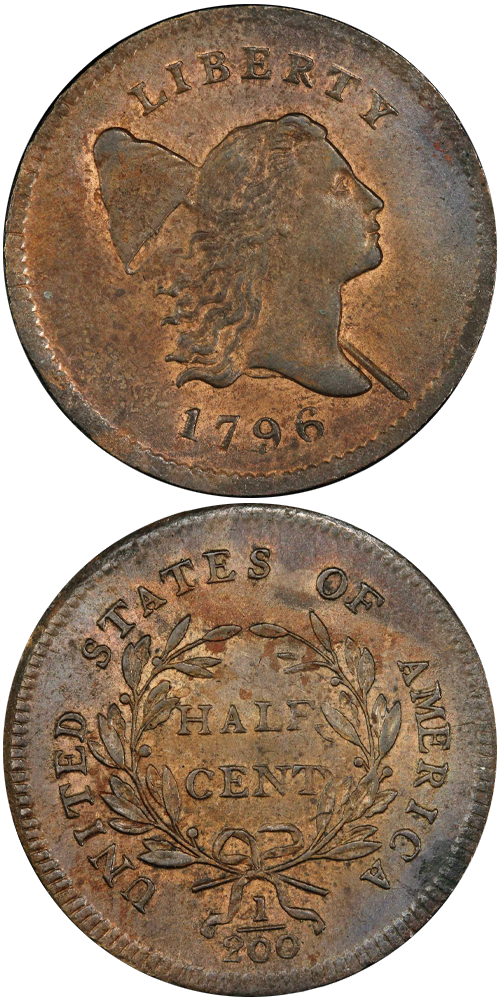1796 Liberty Cap Half Cent
With Pole
Readily attributable by the presence of the pole, close inspection with a loupe also reveals faint repunching to the digit 9 in the date. This is the only known use of this obverse die. On the reverse, a single leaf at the top of each branch in the wreath, four berries on the left branch, three on the right branch; there is a berry on the left side of the bow, but not on the right side. A leaf point is directly below the letter I in UNITED. This die was also used in the 1796 C-1 pairing.
Cohen-2 corresponds to the With Pole Guide Book variety of the 1796 half cent.
With no more than 200 coins believed extant in all grades, the 1796 is the rarest date in the entire half cent series of 1793 to 1857. Most survivors are from the C-2 dies examples of which have been honored rarities ever since numismatics became widely popular in the 1850s. Since then, the appearance of a 1796 has been a special occasion.
Although not as rare as its C-1 No Pole counterpart, the 1796 C-2 is still very scarce in an absolute sense. Perhaps surprisingly for such an elusive variety, there are several Mint State coins known, including at least three Gem Red and Brown coins. One of these, the D. Brent Pogue specimen in PCGS MS-66 RB, realized $470,000 as lot 3009 in our February 2016 sale. Another is the PCGS MS-65+ RB from the Missouri Cabinet, which sold for an extraordinary $718,750 in Larry & Ira Goldberg's January 2014 sale of that collection. Beyond the handful of Mint State coins, however, the census for this variety quickly drops down to the lowest circulated grades, and individual coins at those levels are usually dark and porous.
Planchet stock for this variety was derived largely from rolled sheet copper, at least two of the survivors with Mint-made planchet clips. Whether the C-1 or C-2 was struck first remains a matter of debate, although we believe that the former with its cracked obverse die with no pole was produced first and used as a stopgap measure, until the well-made obverse of the C-2 pairing was made ready for coinage.
The example to the left was sold by Stack's Bowers Galleries in the D. Brent Pogue Part III Auction, where it realized $470,000.






